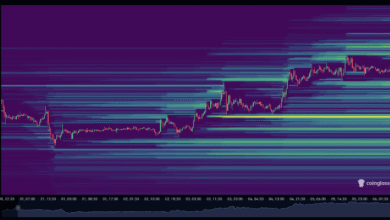Digital Euro: ECB’s Progress Towards a Unified Payment System

The digital euro is fast becoming a focal point in the evolving landscape of financial transactions as the European Central Bank (ECB) gears up for its imminent launch. With a vision set forth by ECB President Christine Lagarde, the initiative aims to modernize Europe’s digital payment landscape, responding to increasing consumer demand for electronic transaction methods. As Lagarde explains, the ECB’s digital currency is designed to complement existing cash systems without replacing them, recognizing the diverse preferences of European consumers. This central bank digital currency (CBDC) represents not just a technological advancement, but a strategic enhancement of payment reliability across the euro area. By establishing a digital euro, the ECB hopes to create a balanced ecosystem that supports a seamless transition between physical and digital transactions within a unified financial framework.
The forthcoming digital euro, often referred to as a central bank digital currency (CBDC), signifies a transformative shift in how monetary exchanges are conducted across Europe. This initiative seeks to bridge the gap between traditional cash transactions and modern electronic payments, tapping into the changing behaviors of consumers who increasingly favor digital solutions. The initiative led by the European Central Bank (ECB) is well-aligned with broader trends in the global payment landscape, where digital currencies are becoming pivotal. Christine Lagarde’s leadership highlights the necessity of this advancement, aiming to address user demands for convenience while maintaining access to cash. Essentially, the digital euro represents a pivotal endeavor to ensure that Europe’s financial infrastructure keeps pace with the digital age while remaining robust and reliable.
The Emergence of the Digital Euro
The digital euro is emerging as a cornerstone of the European Central Bank’s (ECB) vision for a modern monetary system, prioritizing consumer demand alongside evolving payment preferences. ECB President Christine Lagarde has articulated the necessity of a CBDC in response to increasing electronic payment popularity across the euro area. This digital currency is designed to work harmoniously with existing cash systems, ensuring that users still have access to traditional forms of money while embracing the advantages of digital transactions.
As digital payments become the norm in Europe, the digital euro represents a pivotal step towards a unified and efficient payment landscape. By integrating a central bank digital currency into the financial ecosystem, the ECB aims to enhance transaction efficiency and security for businesses and consumers alike. This investment in the digital euro is not merely a response to current trends but a proactive measure to safeguard the future of the European economy against the backdrop of rapid technological advancements.
Frequently Asked Questions
What is the digital euro and why is the European Central Bank pursuing it?
The digital euro is an initiative by the European Central Bank (ECB) to create a central bank digital currency (CBDC) that caters to the evolving digital payment landscape in Europe. ECB President Christine Lagarde highlighted that this move is driven by increasing consumer demand for digital payment methods, while still maintaining access to traditional cash. The digital euro aims to unify payment systems across member states and support both electronic transactions and cash usage.
How will the digital euro affect the current cash system in Europe?
The digital euro is designed to complement the existing cash system rather than replace it. ECB President Christine Lagarde emphasized that cash will continue to be available alongside the digital euro, ensuring options for consumers who prefer cash transactions. The initiative aims to create a balanced digital payment landscape where both digital and physical forms of money coexist to meet diverse user needs.
When is the digital euro expected to launch?
While no specific launch date for the digital euro has been announced, Christine Lagarde indicated that the ECB is nearing completion of its preparations, pending legislative approval. The groundwork has been in development for over six years, and with supportive legislation, the ECB could soon proceed to roll out the digital euro to the public.
What are the benefits of adopting a digital euro for consumers?
The digital euro offers several benefits for consumers, including faster and more convenient electronic transactions, enhanced security in digital payments, and a reliable and sovereign currency backed by the European Central Bank. It aims to facilitate various types of transactions such as online payments and peer-to-peer transfers, meeting the growing demand for efficient digital payment solutions across Europe.
How does the ECB digital currency ensure security and reliability for users?
The ECB digital currency is designed to provide a secure and reliable payment system through strict regulatory oversight and integration with existing banking frameworks. By being issued by the European Central Bank, the digital euro will maintain a high level of trust and security for users, making it a dependable alternative within the evolving digital payment landscape.
What are the key differences between the digital euro and other cryptocurrencies?
The digital euro, as a central bank digital currency (CBDC), differs fundamentally from cryptocurrencies in that it is backed and regulated by the European Central Bank. Unlike decentralized cryptocurrencies, the digital euro will have a stable value, providing users with a reliable form of digital currency specifically designed for everyday use within the eurozone. This makes it a safer and more predictable option for consumers compared to the volatile nature of many cryptocurrencies.
How will the digital euro facilitate transactions in the euro area?
The digital euro aims to streamline and enhance transactions across the euro area by providing a standardized means of payment that supports both online and offline transactions. As highlighted by Christine Lagarde, the initiative seeks to ensure that all eurozone citizens have access to a solid currency that can facilitate peer-to-peer and business-to-business transactions effectively.
What is Christine Lagarde’s vision for the future of the digital euro?
Christine Lagarde envisions the digital euro as a crucial component of Europe’s monetary future, ensuring that the digital payment landscape remains robust and reliable while accommodating the preferences of a diverse population. She emphasizes the importance of having a digital euro that coexists with cash, providing Europeans with versatile payment options that meet their evolving needs in a digital era.
| Key Points |
|---|
| The European Central Bank (ECB) aims to launch a digital euro due to growing consumer demand and the need for a unified digital payment landscape. |
| ECB President Christine Lagarde confirmed the launch is nearing completion pending legislative approval. |
| The project has been in development for six years, driven by shifts in consumer preferences toward digital payments. |
| The digital euro will coexist with physical cash, ensuring that both electronic and cash payment methods are available. |
| The aim is to establish a reliable and sovereign payment system that supports transactions across the euro area. |
| Lagarde stressed the importance of the digital euro to offer secure and diverse payment solutions for all users. |
Summary
The digital euro represents a significant leap towards modernizing the financial landscape in Europe, responding to consumer needs for electronic payments while maintaining the options for cash transactions. As the European Central Bank finalizes preparations for its launch, the digital euro is positioned to unify payment methods across member states, ensuring a reliable and efficient system for all users. With a strong focus on consumer preferences and maintaining cash as an option, the digital euro aims to enhance the overall payment ecosystem in Europe.




